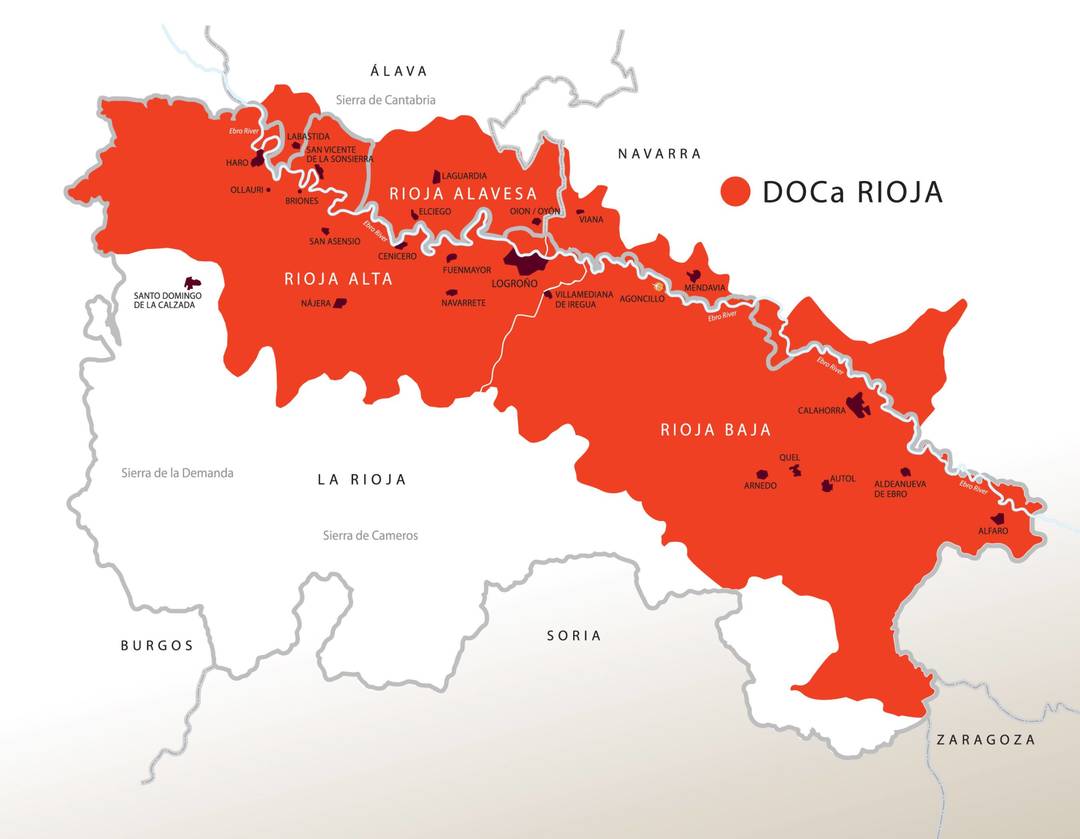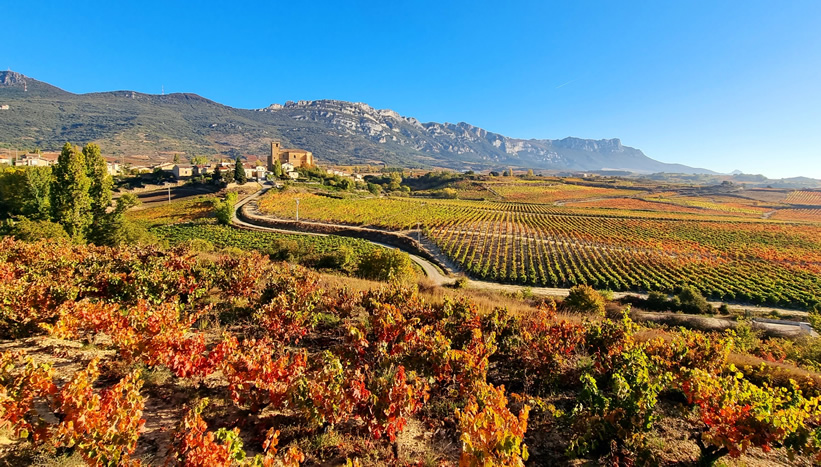Rioja
Wine Map of La Rioja: https://vineyards.com/wine-map/spain/la-rioja
History
La Rioja is a province in Spain,
located in the north of the Iberian Peninsula with its capital Logroño.
It covers part of the Ebro valley to the north and the Iberian
Mountain System in the south. It borders the Basque Country (province of Álava)
to the north, Navarre to the northeast, Aragón to the
southeast (province of Zaragoza), and Castilla y León to
the west and south (provinces of Burgos and Soria).
Although its origins
date back as early as 1102, when King Sancho of Navarra legally recognized the
Rioja wines, it was not until the 17th century that the first
document making reference to the protection and quality assurance of Rioja
wines appeared.
From the 16th century
onwards, Rioja's wine production developed steadily. In 1787 the Royal
Economic Society Rioja Growers was created to promote the cultivation of vines,
wine production and trade development.
La Rioja enjoyed
a major development in the late 19th century, when France and Italy were
devastated by phylloxera.
Rioja was the very first Spanish region to be awarded DO status, back in 1933.
Climate and subregions
The region is protected from
the cold and wet influence of the Atlantic Ocean by the range of the Cantabrian
Mountains located just along its north and west borders. Thanks to these
mountains the weather is significantly warmer and drier there than on the other
side of the range in Cantabria.
The region is composed of three subzones: Rioja Alta, Rioja
Alavesa and Rioja Baja.
Rioja Alta is in the west part on relatively high ground with steep, rugged relief, Rioja Alavesa, in the Basque part, is quite similar, mainly clay and limestone soils, perfect for Tempranillo. Rioja Baja is more geologically speaking, with a low relief, flat terrains, warmer weather, better for Grenache and young wines.
Varieties
The grape varieties that
are currently authorized by the Regulations of the D. O. Ca. Rioja are:
- Red: Tempranillo, Garnacha,
Graciano, Mazuelo y Maturana Tinta.
- White: Viura, Malvasía, Garnacha
Blanca, Tempranillo Blanco, Maturana Blanca, Turruntés, Chardonnay,
Sauvignon Blanc y Verdejo.
Tempranillo
is the main and iconic variety, representing 75% the vineyards. The grape is
native to Rioja. It is very versatile from an oenological viewpoint, it supports
long ageing in barrels, with a good balance of alcohol content, color and
acidity, keeping a smooth, fruity mouthfeel getting even softer with age.
Top end reds from Rioja used
to mature in new American oak barrels. More and more wineries use now a mix of
American and French oak. Virgin oak can give Rioja wines their distinctive
notes of coconut, vanilla and sweet spice.
The amount of time that
a Rioja wine spends in barrel qualifies which of the official Rioja ageing
categories goes on the label: Joven, Crianza, Reserva or Gran Reserva:
- Rioja Joven wines, which are
intended for consumption within two years of vintage, spend little or no
time in oak.
- Rioja Crianza wines are aged for
one year in barrel, and one year in bottle.
- Rioja Reserva wines spend a
minimum of one year in barrel, and cannot be sent to market until a full
three years after vintage.
- Rioja Gran Reserva wines undergo
a total of five years' aging, of which at least two years is spent in
barrel.

Courtesy of Cuna de Reyes : vineyards.com/cuna-de-reyes
